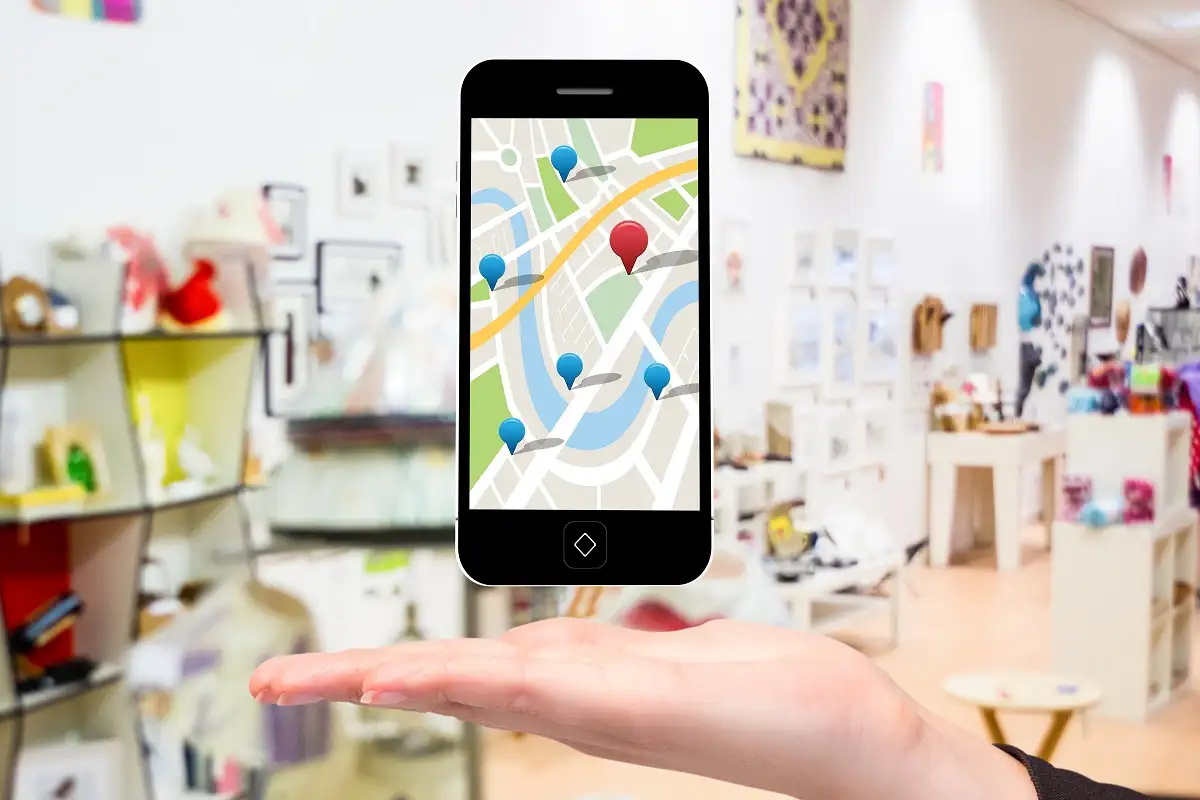In today’s fast-paced world, consumers demand efficiency and convenience. With the rise of digital shopping and an ever-expanding retail market, finding a store quickly and effortlessly has become a priority for customers. Enter the Optimum Store Locator, a tool that revolutionizes the shopping experience by providing precise and user-friendly solutions for locating stores. This article delves deep into the importance of an optimum store locator, its key features, benefits, and how it enhances both the consumer experience and the business bottom line.
The Need for an Optimum Store Locator
The growing complexity of retail landscapes, coupled with the expansion of both online and offline shopping options, has made it harder for customers to find physical store locations. A traditional directory or a simple search engine might not suffice when users require accurate, detailed information about store locations, hours, inventory, and even services. Thus, an optimum store locator becomes essential.
Modern Consumer Expectations
Customers today expect seamless experiences across all touchpoints. They are tech-savvy, time-conscious, and looking for personalized solutions. When a potential customer is searching for a nearby store, they are likely looking for convenience. They want to know:
- Where is the closest store?
- What are the store hours?
- Does the store carry the products I need?
- What amenities or services does this location offer?
- Is the store easily accessible by public transport or car?
A well-designed store locator should answer all these questions efficiently. By addressing these needs, retailers can enhance the customer journey, build loyalty, and drive in-store traffic. After all, happy customers tend to return—and a simple store locator can be the key to keeping them happy.
Bridging the Gap Between Online and Offline
With the rise of e-commerce, many might assume that physical stores are losing their relevance. On the contrary, brick-and-mortar stores continue to play a crucial role in the overall shopping ecosystem. In fact, many customers use online tools, such as store locators, to guide their offline shopping decisions.
For example, a customer may browse online to locate a nearby store that carries a specific product, then decide to pick it up in person to avoid shipping fees or delays. This is where the optimum store locator shines by serving as the bridge between online research and offline purchasing. Retailers who leverage this tool effectively can drive significant foot traffic to their physical stores, enhancing the omnichannel experience.
Features of an Optimum Store Locator
An optimum store locator isn’t just a basic tool that shows store addresses. It’s a comprehensive solution that integrates various functionalities designed to make the search for a store as smooth as possible. Let’s explore some of the essential features that elevate a store locator from average to optimal.
1. Accurate Geolocation Services
One of the most critical aspects of an optimum store locator is accuracy. With the integration of GPS technology and real-time geolocation services, customers can easily find the nearest store relative to their current position. Whether they’re at home, in a new city, or on the move, the store locator pinpoints the closest option with precision.
2. Advanced Search Filters
Customers are often searching for more than just proximity. They may need stores that are open late, that offer certain amenities, or that carry specific product lines. An optimum store locator allows users to apply filters to their search, such as:
- Store hours (open now, 24/7 service)
- Services available (curbside pickup, in-store returns)
- Accessibility features (wheelchair access, parking availability)
- Product availability (by checking local inventory)
By giving customers control over their search, businesses can cater to diverse needs and improve the likelihood of in-store visits.
3. Real-Time Inventory Checks
Nothing frustrates customers more than arriving at a store only to discover that the item they need is out of stock. By integrating real-time inventory management with the store locator, retailers can provide customers with up-to-date information about product availability. This feature empowers customers to make informed decisions and eliminates wasted trips.
4. Mobile Optimization
The modern consumer is increasingly reliant on their smartphone. Whether they’re browsing social media, shopping online, or searching for a store, they want mobile-friendly experiences. An optimum store locator must be fully optimized for mobile devices, offering fast load times, responsive design, and easy-to-navigate interfaces. This ensures that users can find the information they need on-the-go, without frustration.
5. Customizable Maps
Interactive and customizable maps enhance user experience by allowing customers to visualize the store’s location in relation to their surroundings. Integrating maps like Google Maps or Apple Maps not only helps users get directions but also provides additional information, such as nearby landmarks, traffic conditions, and alternative routes.
6. Store Details and Amenities
In addition to providing basic address information, an optimum store locator should offer detailed store descriptions. These include:
- Store hours (including holiday or special hours)
- Contact information (phone number, email)
- Services offered (fitting rooms, gift wrapping, personal shopping)
- In-store events or promotions
Providing these details helps customers plan their visit and creates a richer, more informative experience.
7. Integration with Customer Accounts
An advanced store locator can be integrated with customer accounts to offer personalized recommendations. For example, logged-in users might see their preferred stores highlighted or receive suggestions based on their past purchases and location history. This level of personalization adds value to the customer experience and increases the likelihood of conversion.
8. Multi-Language and Accessibility Features
To cater to a diverse audience, an optimum store locator should offer multi-language support and accessibility features. For example, text-to-speech options, screen-reader compatibility, and easy navigation for those with disabilities can make the tool usable by a broader demographic. Inclusivity in design ensures that no customer is left behind.
9. Social Sharing Features
Allowing users to share store details with their friends or family can increase foot traffic. By integrating social sharing features into the store locator, customers can easily share location details via social media platforms, messaging apps, or email.
Benefits of Using an Optimum Store Locator
Retailers who invest in an optimum store locator reap multiple rewards. While the tool directly benefits customers by making their search for a store more convenient, it also significantly improves business operations and sales. Below are some of the key benefits.
1. Enhanced Customer Satisfaction
A store locator that meets customer expectations by offering accurate, up-to-date information leaves a lasting positive impression. When users can quickly and easily find the information they need, frustration is minimized, and the likelihood of repeat business increases. In fact, a seamless store-finding experience is a powerful driver of customer loyalty.
2. Increased Foot Traffic
For businesses that rely on physical locations, driving foot traffic is crucial. An optimum store locator helps by pointing customers directly to stores near them, often leading to impulse visits. For example, a customer searching for a product online might notice that it’s available at a store just minutes away and decide to make the trip immediately.
3. Streamlined Omnichannel Experience
An optimum store locator bridges the gap between digital and physical retail. By integrating online product browsing with real-time inventory and geolocation data, customers can switch seamlessly between channels. For example, a customer might research a product online, reserve it for pickup, and collect it at the store—facilitating a smooth omnichannel journey.
4. Higher Conversion Rates
A frustrated customer is unlikely to make a purchase. By providing essential store information upfront, businesses remove barriers to conversion. When users can easily locate a store, see if it’s open, and know that their desired product is in stock, the decision to visit becomes much easier. This streamlined experience translates into higher conversion rates for retailers.
5. Valuable Customer Insights
An optimum store locator can serve as a valuable source of customer data. By analyzing how users interact with the tool, businesses can gain insights into customer preferences, peak shopping times, and geographic demand. This data can inform everything from inventory decisions to marketing strategies, helping retailers better serve their customers.
6. Boosts Local SEO
Having a robust and efficient store locator can improve a business’s local SEO (Search Engine Optimization) performance. Search engines prioritize websites that provide accurate, useful information to users. When businesses integrate store locators with clear addresses, store hours, and other relevant details, they are more likely to rank higher in local search results, thus driving organic traffic both to their websites and physical stores.
7. Reduced Customer Support Queries
When a store locator provides all the necessary information upfront, customers are less likely to contact customer support for store-related inquiries. This reduction in queries can lead to cost savings for businesses and frees up customer service teams to focus on more complex issues. In essence, an optimum store locator serves as a self-service tool for customers.
Best Practices for Implementing an Optimum Store Locator
While the features and benefits of an optimum store locator are clear, implementing one successfully requires careful planning and execution. Below are some best practices to ensure that your store locator performs at its best.
1. Ensure Mobile Compatibility
Given the prevalence of mobile usage, your store locator should be fully optimized for mobile devices. Ensure that it loads quickly, offers a clean, intuitive design, and provides easy access to key features. Remember, a store locator is often used by customers who are on the move, so simplicity and speed are key.
2. Regularly Update Store Information
An outdated store locator can do more harm than good. If store hours change, new locations open, or existing stores close, these changes must be reflected immediately in the store locator. Outdated information leads to customer frustration, missed sales opportunities, and damage to your brand’s reputation.
3. Use Location-Based Personalization
Leveraging location-based data can enhance the user experience. For example, if a customer is in a specific region, highlight stores near them automatically without requiring them to enter their location manually. Personalized features like this streamline the search process and make the tool feel more intuitive.
4. Integrate Customer Feedback
Your customers are the ultimate users of the store locator, so listening to their feedback is essential. Whether through formal surveys or informal reviews, gather insights on how the tool is performing and what improvements could be made. Continuous optimization based on real user feedback ensures that your store locator remains relevant and effective.
5. Prioritize UX/UI Design
An optimum store locator must be easy to use. Invest in user-friendly UX/UI design to ensure a smooth, intuitive experience. Clear buttons, minimal clicks, and a logical flow are all key factors in creating a positive user experience. If your store locator is difficult to navigate, users are likely to abandon it and look elsewhere.
6. Integrate with Analytics Tools
To measure the success of your store locator, integrate it with analytics tools. Track user behavior, popular search terms, conversion rates, and other key metrics to gauge performance. This data allows you to make informed adjustments and optimizations over time, ensuring that your store locator continues to serve its purpose effectively.
7. Promote the Store Locator
Even the best store locator won’t help your business if customers don’t know it exists. Promote it prominently on your website, through social media, and via email campaigns. Whether a customer is shopping online or exploring your brand’s website, the store locator should be easy to find and use.
Conclusion
In the modern retail landscape, an optimum store locator is an indispensable tool that benefits both customers and businesses. It simplifies the shopping experience, drives foot traffic, enhances local SEO, and provides valuable customer insights. By incorporating key features like geolocation, real-time inventory, and advanced search filters, businesses can elevate their customer experience and create lasting impressions.
To remain competitive, retailers must embrace technology that meets the demands of today’s consumers. An optimum store locator does just that—it seamlessly connects online browsing with offline purchasing, ensuring that customers can easily find what they’re looking for, whenever and wherever they need it. The result? Happier customers, higher conversion rates, and a stronger retail presence.



